From Translation to Teaching
By the middle of the 12th century, a wealth of texts of many origins—Greek, Latin, Arabic, and local practice—were combined in different ways, each creating a unique corpus of knowledge. At Salerno, where Constantine, the well-known translator had started his activity, a school dedicated to the teaching of medicine was flourishing. According to legend, it was created by four doctors—one Jewish, one Greek, one Arabic, and one Christian—illustrating the diversity of sources of knowledge found in Salerno. Combining both translating and teaching, Salerno became a center of knowledge in Medieval Europe. In the 13th century, the medical texts of Salerno gradually found their way into the medical curriculum of universities.
The Formation and Development of a Corpus
The Articella was the most popular textbook of the late Middle Ages. It is a collection of works by Hunayn Ibn Ishaq, Hippocrates, Galen, Theophilos, and Philaretos in Latin translation. Traditionally attributed to Salerno, it has been claimed recently to be of Parisian origin.
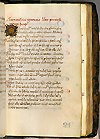
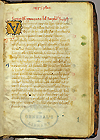
The encyclopedia of medicine by Ibn Sînâ was added to the Articella by assembling manuscripts over time, a practice not infrequent in medieval medical literature.
Manuscript E 2, ff. 1 recto, 21 recto
The Practice of Medicine
At first, the distinctive characteristic of the Salernitan milieu was translation. Later, it became practical ability in medical treatment. Physicians wrote personal works of a new kind, notebooks called Practica, similar in approach to Hippocratic medicine.
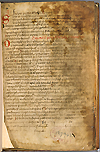
The Practica, such as that by Roger, were collections of treatments, very often based on the daily experience of physicians.
Manuscript E 36, f. 1 recto.
University Commentaries
Commentary became the major form of teaching: a master read a canonical text and explained it according to a pattern of questions. The page layout was adapted to this method, juxtaposing the commentary and the text commented upon, also distinguishing them with different sizes or types or writing.
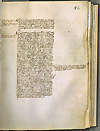
The page containing the chapter Cura vomitus (Cure for vomiting) is a clear example of the layout for a reader's comments: "I have experience with this entire prescription (Hoc totum expertus sum)."
Manuscript E 23, f. 46 recto.
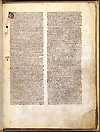
At Bologna, Taddeo Alderotti was among the very first teachers of the newly founded university. During his classes, he commented on texts translated by Salernitan masters.
Manuscript E 14, f. 1 recto.
Last Reviewed: May 2, 2012


